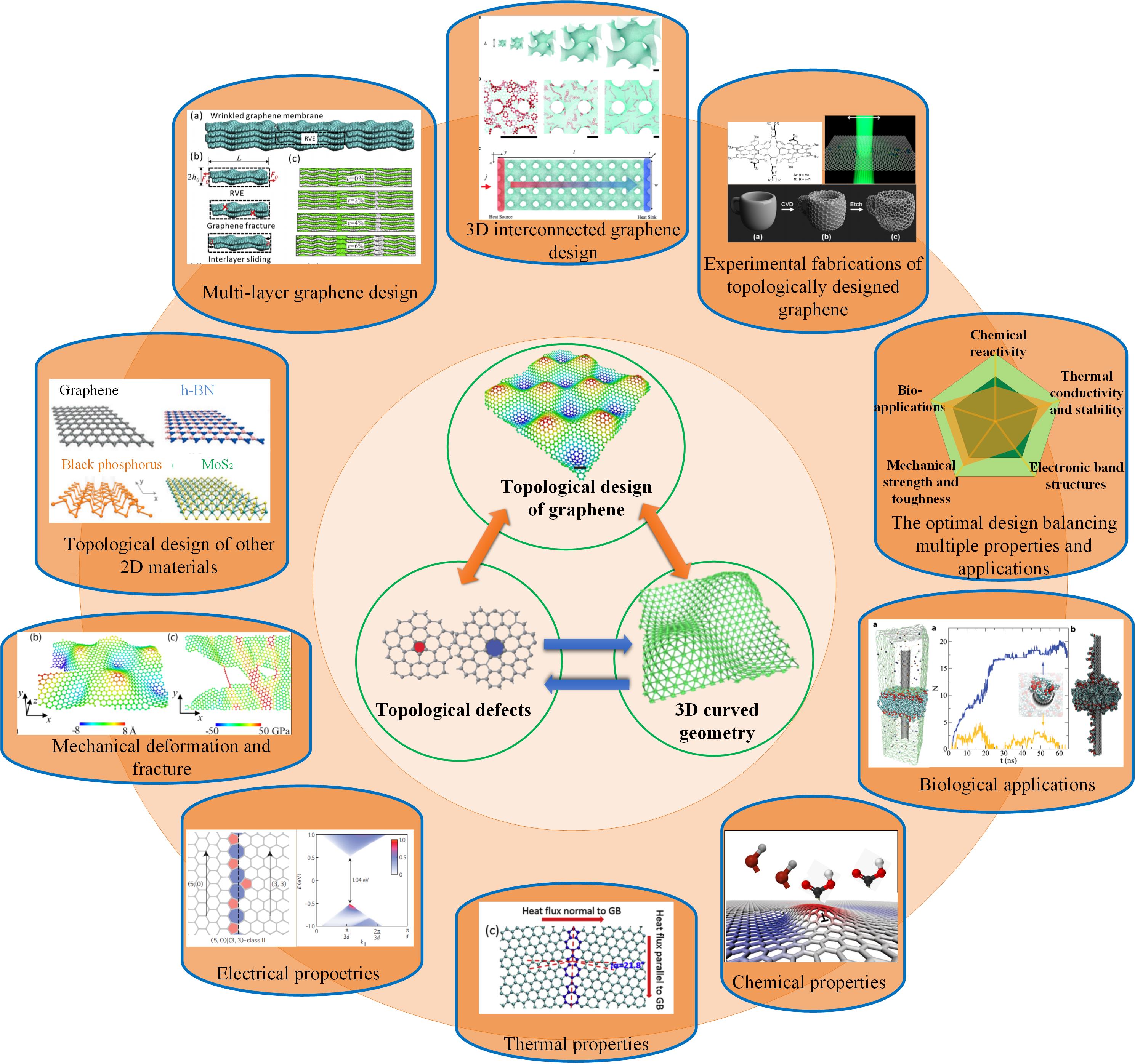Abstract
Topological defects (eg, pentagons, heptagons, and pentagon–heptagon pairs) have been widely observed in large-scale graphene and have been recognized to play important roles in tailoring the mechanical and physical properties of two-dimensional (2D) materials in general. Thanks to intensive studies over the past few years, optimizing properties of graphene through topological design has become a new and promising direction of research. In this chapter, we review some of the recent advances in experimental, computational, and theoretical studies on the effects of topological defects on mechanical and physical properties of graphene and applications of topologically designed graphene. The discussions cover out-of-plane effects, inverse problems of designing distributions of topological defects that make a graphene sheet conform to a targeted three-dimensional surface, grain boundary engineering for graphene strength, curved graphene for toughness enhancement, and applications in engineering energy materials, multifunctional materials, and interactions with biological systems. Despite the rapid developments in experiments and simulations, our understanding on the relations between topological defects and mechanical and physical properties of graphene and other 2D materials is still in its infancy. The intention here is to draw the attention of the research community to some of the open questions in this field.
